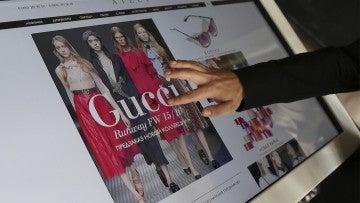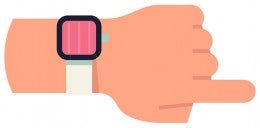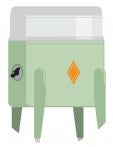The world of retail is constantly changing and much of the change is because new technology is altering the way people shop. “The move towards a seamless retailing experience continues to be a key trend,” says Andrew Long, head of IT strategy at Accenture UK. “Technology is the enabler for this, blurring mobile and online with physical stores.”
The different channels are now combining to become part of a wider, multichannel shopping experience, says Peter Fitzgerald, country sales director at Google. “The old belief that consumers would search and then purchase online no longer stands,” he says. “The customer journey now runs across desktop and mobile, and often involves multi-screening or showrooming.”
Online technical innovation has created new opportunities for both consumers and retailers, with new entrants offering different shopping channels. “YouTube has recently launched click-and-buy video adverts, which will allow consumers to buy products directly from the video ads they are watching,” says Matthew Knight, head of strategic innovation at Carat UK. “Google has also announced that it will introduce a ‘buy button’ to its search result imminently, enabling users to buy products without needing to visit a separate website.”
Arming sales staff with laptops, tablets and smartphones can help reduce lost sales due to a lack of stock, and can also help build better relationships with customers
3D printing is also starting to have an impact, offering the potential for individuals to “print” products in their own homes. “Currently this is limited to certain materials, such as plastics and metals, but in the next three or so years we should see the 3D printing of fabrics,” says Simon Shen, chief executive of 3D printer manufacturer XYZprinting. “This has the potential to completely revolutionise textile, fashion and home interiors retail.”
The mobile channel is also evolving as retailers compete for attention. Omaid Hiwaizi, president, global marketing, at Blippar, points to the use of augmented reality technology. “By effectively bringing the environment and products to life through the lens of a smartphone, retailers can create better experiences for shoppers and gather data to personalise the experience for each individual,” he says.
Mobile technology is infiltrating stores as the boundaries between online and offline blur further. Arming sales staff with laptops, tablets and smartphones can help reduce lost sales due to a lack of stock, and can also help build better relationships with customers, says Ben Dowd, business director at O2. “The experience of buying is becoming just as important as the product being sold,” he says. “Smart retailers are exploring the potential for mobile technology to change fundamentally the way they interact with customers, whether they’re online or on the high street.”
The use of Bluetooth beacons and in-store wi-fi access points are enabling retailers to target customers as they enter a store, allowing them to deliver personalised offers and increase sales. “Retailers can see where a customer stopped to look at merchandise, how long for and then determine exactly which products the customer is looking for,” says Mark Thomson, retail industry director at Zebra Technologies. “This information can be used in conjunction with cloud-based internet of things platforms to deliver customised messaging on in-store displays and personalised deals to shoppers on their mobile devices as they shop.”
In this environment, having effective data about consumers becomes even more important. “It’s the difference between being blindfolded and having a telescopic lens into the potential value of every customer,” says Jason Lark, managing director of data marketing agency Celerity. “By understanding each customer in-depth through data analytics, retailers can use technology to deliver content and promotions to customers who will be pleased to receive them and so more likely to purchase products.” Incremental spend and margin can be increased by as much as 30 per cent, he adds.
In the future, this could incorporate data gleaned from wearable technology, predicts John Fleming, marketing director, Asia-Pacific, Europe, the Middle East and Africa, at Webtrends. “If a consumer is out jogging and using a fitness app with GPS tracking, a supermarket could partner with the app to send them an alert at the end of their exercise, offering them a discount on an energy drink at their nearest store,” he says.
In addition, payment habits are changing with retailers looking to offer more convenient ways for customers to pay. “Ten years ago it was enough to provide a credit card terminal, now retailers have to consider options that let people pay with apps, PayPal or using contactless payment,” says Istvan Kapitany, executive vice president at Shell Retail. “New payment technologies provide benefits both to customers, in convenience and cost, and also to retailers, in engagement and operational efficiencies.”
TOP FIVE TECHS FOR RETAIL
1. BEACONS
The technology, which provides in-store analytics and marketing solutions for brick-and-mortar retailers, has already generated results for several merchants, which is why beacon adoption is expected to continue to grow in 2015.
2. POINT-OF-SALE TECHNOLOGY
Vendors of cloud-based point-of-sale systems claim they can outperform old-fashioned cash registers in all aspects, including performance, functionality and appearance. An increasing number of retailers are expected to upgrade their payments systems and make the switch.
3. WEARABLES
Rapidly increasing popularity of wearable tech, such as smartwatches and fitness monitors, is expected to prod forward-thinking retailers into experimenting with the technology to market or serve customers. Ownership of wearables is expected to double in 2015 from 7 per cent of consumers.
4. AUGMENTED REALITY
From virtual fitting rooms to interactive window displays, merchants are continuously finding ways to use augmented reality (AR) to draw attention and improve customer experience. Walgreens US retail chain is testing Google’s Project Tango 3D to create AR-enabled mobile maps and navigation for its customers.
5. 3D PRINTING
Some merchants, including online jewellery store Brilliance.com, have already found a use for 3D-printing technology. Brilliance is using 3D-printed mock-ups to help customers try on different rings so they can determine the right size, shape, carat and diamond arrangement for their hands.
TOP FIVE TECHS FOR RETAIL





